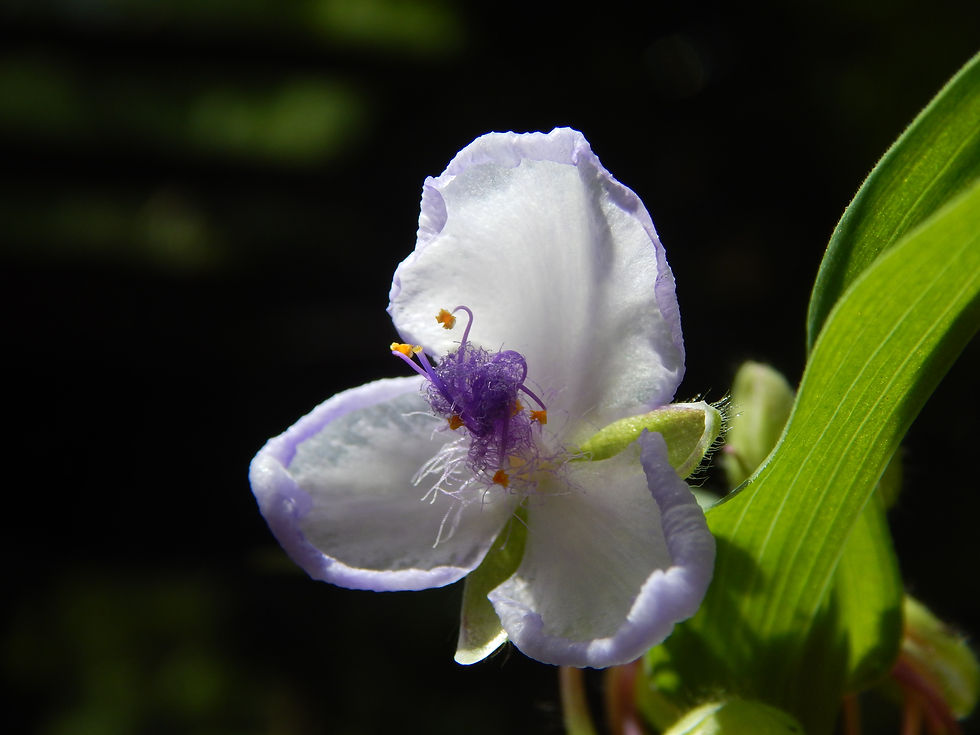SPIDERWORT
Spiderwort, scientifically known as Tradescantia, is an enchanting perennial plant cherished for its captivating flowers and resilient nature. Here’s a closer look at this charming plant:
Appearance and Growth:
Distinctive Blooms: Spiderwort bears clusters of vibrant, three-petaled flowers that are usually blue, purple, pink, or white, radiating from the tips of arching stems.
Foliage: The plant features slender, strap-like leaves arranged in a cascading or clumping fashion, often in a grass-like form.
Growth Habit: Spiderwort can spread through creeping rhizomes and self-seeding, forming attractive colonies in gardens.

Characteristics and Behavior:
Hardiness: It's known for its adaptability and thrives in various conditions, ranging from full sun to partial shade, making it a versatile addition to gardens.
Flowering Period: Traditionally, spiderwort blooms in late spring to early summer, producing flowers that last for a day, but new blooms appear continuously.
Pollinator Magnet: Its colorful blossoms attract bees, butterflies, and hummingbirds, enhancing biodiversity in the garden.
Cultivation and Care:
Soil and Watering: Spiderwort prefers moist, well-draining soil but can tolerate various soil types. Ensure adequate watering, especially during dry spells.
Sunlight: While it prefers partial shade, spiderwort can adapt to full sun conditions, although intense sunlight might cause its blooms to fade.
Propagation: Easily propagated by division or by collecting and planting seeds. Transplanting divisions is best done in early spring or fall.
Landscaping Uses:
Borders and Ground Cover: Spiderwort is an excellent choice for borders, edgings, or ground cover, creating lush, colorful patches in the garden.
Container Gardening: Its adaptability to various light conditions makes it suitable for container gardening in both indoor and outdoor settings.
Companion Plant: Combines well with other perennials or as an underplanting beneath taller shrubs, adding a touch of color and texture.

Versatility and Adaptability:
Low Maintenance: Relatively low-maintenance and hardy, spiderwort requires minimal care once established, making it ideal for novice gardeners.
Tolerant of Adverse Conditions: It's resilient against pests and diseases and can tolerate occasional neglect or fluctuating weather conditions.
Conclusion:
Spiderwort, with its captivating blossoms and adaptable nature, is a versatile perennial suitable for a range of garden settings. Its vibrant flowers, continuous blooming, and adaptability to different light and soil conditions make it a popular choice among gardeners. Whether used as a ground cover, border plant, or container addition, spiderwort's resilience, low maintenance requirements, and colorful blooms contribute to its appeal. Its effortless charm, ability to attract pollinators, and adaptability make it a delightful addition to any garden seeking a touch of vibrant color and easy-care perennials.
Comments